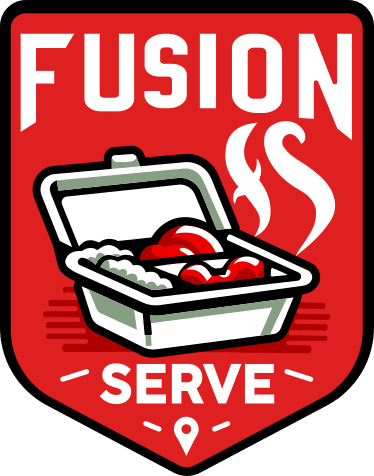Building Your Perfect Fusion Serve Menu: Picking the Right Packaging: A Practical Guide for Fusion Serve Vendors

Perfect packaging isn’t a cosmetic extra—it’s the last critical step that protects food quality, controls costs, and speeds up service. Use the checklist below to match each menu item with the container that keeps it tasting exactly the way you intended.
1. Match the Heat-Holding Method
Dry-heat units
- Choose vented foil pans, trays, or clamshells that let steam escape.
- Prioritize crisp retention for breaded, fried, or baked items.
- Add absorbent pads only if grease drip is a problem—never for items that need to stay crunchy.
Regular (humid) heat units
- Use insulated foam or heavy-gauge plastic clamshells that trap gentle moisture.
- Opt for tight-sealing lids to keep sauced, braised, or scrambled foods from drying out.
- Avoid vent holes; moisture loss is your enemy here.
2. Factor in Moisture and Texture
High-moisture dishes
- Saucy entrées, stews, and casseroles do best in leak-resistant, snap-lock lids.
- Pick containers with internal compartments only if sauce bleed could ruin sides.
Low-moisture, crispy foods
- Go for shallow foil trays with clear vented lids so customers can see the product.
- Position items on a ridged or slotted base to elevate them above condensation.
3. Align Portion Size and Presentation
Bulk service
- Half- and full-size hotel-pan depth foil trays streamline prep and fit straight into dry-heat cabinets.
- Always prepare one clearly labeled “Display—Take Last” tray per menu item so guests can preview the product without opening sealed portions.
Individual meals
- Right-size clamshells or meal bowls to the portion weight you measured during costing.
- Too much head-space invites shifting and cooling; too little risks lid failure.
Snackable sides
- Use small vented cartons or cups for fries, hash browns, or wedges—easy to nest in bag corners.
- Moist sides like mac-and-cheese belong in sealed 8–12 oz soup cups with peel-back film lids.
4. Integrate Barcodes and Labeling
- Apply scannable barcodes to every container, including display trays, to speed checkout and ensure POS accuracy.
- Use large-format, high-contrast labels that survive heat cabinets and minor spills.
- Include prep time or “hold-by” stickers on bulk trays to keep FIFO (first-in, first-out) discipline tight.
5. Control Costs Without Sacrificing Quality
- Order vented lids only for SKUs that truly need them; plain lids are cheaper for moist dishes.
- Choose stackable designs to reduce delivery-caddy real estate and lower handling time.
- Test a sample batch in your actual cabinet before buying by the case—few things cost more than a truckload of the wrong lid.
Make packaging selection a deliberate part of menu development, not a last-minute purchase. The right container protects your food, your margins, and your brand experience from kitchen to customer. When in doubt, run a quick scenario with Delivery Dave—he’ll weigh the costs (literally) and steer you to the smartest fit.
Contact Us
Contact Form
We're ready to Serve!
_______________
Request a Free Meal Service Assessment :
_______________
Whether you are seeking services or a local vendor looking to grow; take the first step towards discovering how to thrive in Fusion Serve's Meal Service Ecosystem!
